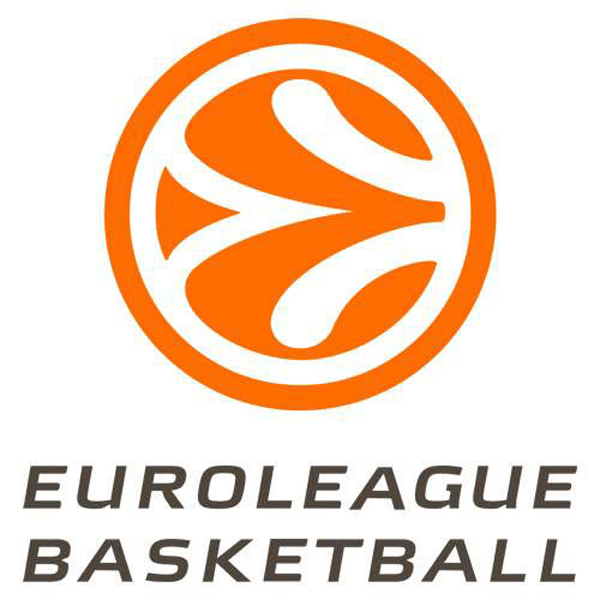
In the first of a series of pieces looking at the business and marketing of European basketball, Emmet Ryan reacts to the news that Euroleague may fully close off entry to the new 16 team competition
The civil war has been ugly. The fans have been left hanging by and large. Money talks, naturally, but right now it is of secondary concern to ego. Protecting the assets they have seems far more important to the powers that be in Euroleague and FIBA than finding a path for real growth within the sport. That lack of collaboration on the financial side of the sport should be of concern to those who just want to watch good basketball.
The field before us
As it stands Euroleague will have a 16 team season next year with teams playing each other twice over a round-robin 30 game season leading on to playoffs and a final four. That’s a meaty schedule with 35 games at a minimum in total for the eventual champions and at least 33 for half the participants. With a dozen spots already sorted and Darussafaka Dogus all but certain as the 13th team, that leaves three places which looked likely to be based on merit such as winning a national championship in a key market (Germany, Adriatic League, etc) but instead the reports now suggest that Euroleague will go with direct invites to specific clubs. It’s either going to be a fully closed shop or really close to one.
The FIBA Basketball Champions League, even allowing for the name issue (which we will get to in a later column), promises to be far shorter in format albeit allowing for 56 teams in total and a much clearer route to entry. This, naturally, is awfully appealing to any club closed out of Euroleague but the 24 game format (the likely number an eventual champion would play) would feel like a step back for the bigger clubs on the continent. Unsurprisingly the bulk of these are in bed with Euroleague already.
The merits of FIBA’s own competition however will wait for another day (the third column in this series to be precise). The far more pressing matter is that Euroleague’s decision to essentially close off the league is really worrying for growth. With those on the outside essentially defecting to FIBA en masse, Eurocup is the walking dead and the brain trust in Barcelona seems a little too okay with that.
Any plan for the growth of this sport in Europe, and this is purely talking in money terms here, must be built around…wait for it…growth. That’s where a closed system comes in.
Shut that door
The logical step when Euroleague announced plans for a 16 team competition was to maintain Eurocup as a means to get a place in the big show. In theory, reducing the number of teams in the top competition would enhance the overall strength of the secondary one and with it make the prize of earning a slot in Euroleague seem far more valuable.
As it stands, or rather as it even stood before FIBA raided it this season for the FIBA Europe Cup, the competition was a bloated mess. The aim of keeping clubs from across the continent onside diluted quality substantially. Even conceptually, having 32 teams still active in the second tier in February for a competition that ends in April seems bloated.
Despite the back end of the competition usually involving some seriously talented sides, the need to revert to a home and away format for the final from a one-off game shows the issue with interest. Fans didn’t rate the title of Eurocup champion high enough to hop on a plane and head to a final.
The reduced version of Euroleague presents not only a means to address all of this but to make Eurocup a revenue generating project in its own right. The market factors that could be make that a reality will be addressed in the next column (yes this really is a series) but fundamentally it would be built around reducing it to a 24 team competition with clearly defined paths to entry at the start of every season.
The key area to look at now is how Eurocup can be used to grow the primary competition, Euroleague.
Stagnation is the enemy
Standing at 16 teams long-term could potentially work but it is far from ideal. Teams are going to become those that are simply expected to not do well, they will be the sides who those viewing essentially expect to turn up and finish in spots 12 through 16 every season. That’s not exactly encouraging and it is going to hamper growth.
Being part of the elite club and offering a route has to be the primary goal. The 16 team model has to be seen as a start not an end point. Contraction with the purpose of real growth. That means expanding to 18, 20, 22, and ideally 24* teams with a conference model once it hits 20. The goal being to show that the elite tier of this sport in Europe can legitimately grow. For all the extra money coming through the IMG deal the current focus is just too narrow. It’s based on what money can be had today rather than what the pot can grow to and basketball really has done all it can to prevent that potential pot from growing.
*Not incidentally because of the current format being 24 to start with but because this seems like the most ambitious this can see as working over the next couple of decades.
Eurocup can present that route to expansion and present the means for those clubs who want a place to show why they belong at the top table. The 24 team remodelled Eurocup would also prove a good test bed for the format an expanded Euroleague would take. Do you go East-West, North-South, a pod system like the NFL (probably not the best but worth real analysis), or something completely different. It allows for working out how to do crossover games between conferences or really any kind of dallying around to polish it to get you the ideal model for the primary competition because the model ahead isn’t ideal.
Penny wise pound foolish
The 16 team model has to be the beginning of the plan. Teams like Darussafaka being one of those shows the short-term nature of it in current form. While it’s easy to pile on the Istanbul club their presence is essentially one of necessity. They are owned by one of Euroleague’s major sponsors, that sponsor is with Euroleague to get its team in the competition.
Another Istanbul club with somewhat better but still less than ideal ability to draw eyeballs has played the same role for quite a while now. The cold hard cash these clubs can bring along with the guarantee of strong rosters because their owners are rich is easy to jump on because any project needs capital early. The problem with the Efes example is that need has gone a little beyond early. These are the teams you need in on day one of a project but those that join later really ought to offer something more.
The knock-on effect of relying on such clubs however is that they hamper the bases within teams that can organically drive revenue. Right now there are rich clubs with low fan-bases (Efes, Dacka), helping to keep rich clubs with large fan-bases happy (e.g. Fener, Real), who are also being kept happy by less rich clubs with large fan-bases (e.g. Oly, PAO, Maccabi), and comparable paupers with great fan-bases (Zalgiris). Those last three categories get an immediate benefit from the presence of the first but all four of them suffer long-term because everything about making enough money to keep going is built on a balancing act. Most fans care most about their own clubs, not a shocking revelation, but they need someone to play and hating someone because they are loaded and have no fans really only keeps the hardcore interested. Likewise there’s only so much interest in taking on a side with great support but on a radically different financial plain.
It’s not exactly how you build a rivalry as wonderful as Panathinaikos and Barcelona, possibly the easiest to sell non-geographic or socio-political rivalry in European basketball. That is the kind of rivalry you want to replicate across a continent and that’s rather difficult.
Growth will only come with public buy-in. That means getting more people to consistently want to consume the product. In Euroleague’s case that means going to games, viewing them on TV or the internet, and generally spending cash on ancillary products but primarily the former two. By doing that successfully you get top tier sponsors on board and generate more TV revenue. It is a classic case of simple but not easy. To do it, the existing 16 are going to need help and it’s got to come from those not in the fold.
Setting out criteria for expansion can present clubs with a goal. Money is always going to talk but sustainable cash is so much more appealing. By closing off access in the current form, it’s an awful lot harder for a club to make a case as a sustainable expansion member who will add long-term value.
About that conference model
The 16 team combined format is to ensure the best teams get to play each other more often and any expansion would in theory hamper that. This series is going to assume no split from national leagues because aside from that making little financial sense, it just doesn’t look like something that is going to happen.
The point of going up in teams is to make more better teams long-term. An expanded elite won’t work as a diluted elite. If it did, we probably wouldn’t see the current power clubs so eager to move to the model ahead for next season.
By essentially overseeing the European activities of the top 40 clubs on the continent (expanding to 48 with the potential increase in scale of Euroleague), that road map can be drawn clearly. The structure for expansion can take many forms so long as it’s clear. If a team knows what it needs to do to be part of the main party it can set out a plan to join that club. Through Eurocup, Euroleague can show it understands what that means on a wide but far more manageable scale.
How we manage that and how viable markets are identified will make up the bulk of the next column but the problem now is clear. FIBA’s Champions League is essentially going to prevent a single body from having this much oversight. What basketball needs is collaboration from all stakeholders (yes, that’s column four in this series). If Euroleague wants to expand, it probably can cherry pick from clubs in that competition but the complete lack of cooperation between the bodies running both leagues means it is nigh on impossible to build a sustainable model.
The goals
The point of all this is to make basketball a financially viable product, heaven forbid someone outside of the USA tried to be profitable with a sports team that’s just bizarre, that grows its audience and keeps it happy. Closing off a league hampers both of those objectives in the long-term despite the initial boost.
The next column will address the reason why Eurocup matters to the overall strategy of European basketball. The third will look at the impact of FIBA Basketball Champions League and the fourth will be on the impact a lack of collaboration has on all parties, especially the fans. I was going to say last there but like the Doctor, this saga tends to break the rules of regeneration.



Leave a Reply